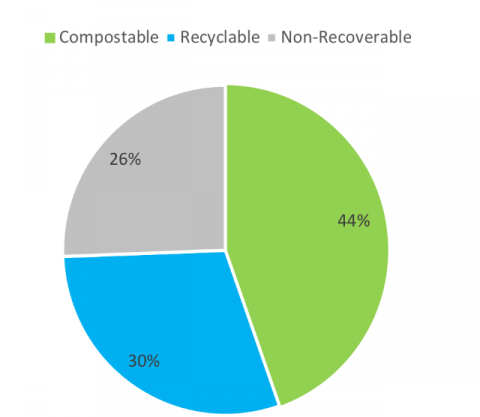You are here
Waste Stream Characterization Study Phase 1 (Completed)
Recent Project Updates
-
4/2/2015Dear iCAP Working Group Members,As a reminder, we will be meeting this Thursday at 1:30 (and also next Thursday, 4/9, at 1:30).This week we will discuss the timeline for completing our work on the iCAP, and then turn our attention to the 7 attached...
-
11/16/2014Final Waste Stream Characterization Study of Swanlund Administration Building, Henry Administration Building, the Illini Union Bookstore, and the Alice Campbell Alumni Center.
Project Family
-
Establish a Net Zero Waste Plan and Policy
- Appropriately Staff Zero Waste Efforts
- Measure Waste Levels in Dumpsters [ARCHIVED]
- Plan for Organic Waste
- Track Waste from Frontload Trucks
- Use Landfills with Methane-capture Technology [ARCHIVED]
- Waste Stream Characterization Study Phase 1
- Waste Stream Characterization Study Phase 2
- Waste Stream Characterization Study Phase 3
Key Objective
-
25. Food and Waste Study
(2010 iCAP)
Associated Collections
Description
Background
Project Team
-
Primary Contact:
Morgan JohnstonProject Leader:
Luis RodriguezTeam Members:
- Seth Rients
- Jack Dempsey
- Bart Bartels
- Shantanu Pai
- Tracy Osby
Dates
-
Proposed May 1, 2013Proposed by Seth RientsApproved June 1, 2013Approved by Jack DempseyCompleted September 15, 2014Completed by Shantanu Pai
Themes
-
Primary Theme:
Project Location(s)
This map is interactive! Click (or touch) and drag to pan; scroll (or pinch) to zoom.

